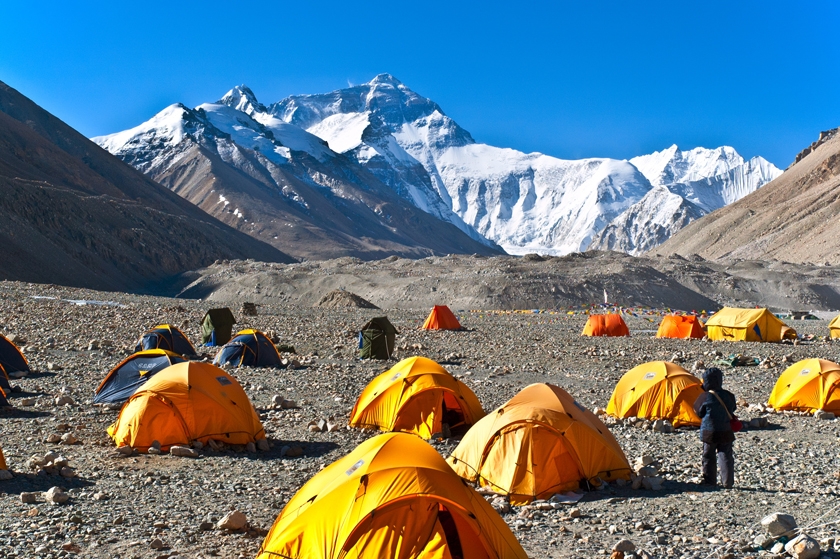 If all the imagery and talk surrounding the 60th anniversary of the first ascent of Mount Everest has got you thinking about how you'd like to see the tallest mountain on earth, we round up the options open to you.
If all the imagery and talk surrounding the 60th anniversary of the first ascent of Mount Everest has got you thinking about how you'd like to see the tallest mountain on earth, we round up the options open to you.
Everest, once seen as the toughest challenge in mountaineering, is acquiring a reputation as a much easier ascent; people of suitable fitness and experience are able to make it to the top in the company of expert guides and sherpas, whilst mooted plans to add a ladder to the infamous Hilary Step, the last obstacle on the way to the summit, are designed to ease congestion and speed up the ascent and descent of the mountain.
However, if you want to experience the atmosphere of a big mountain without paying £40,000 for the pleasure of climbing to the top, you can follow in the footsteps of the New Zealand beekeeper and local Sherpa who came to the world's attention on 29 May 1953 in a variety of ways.

With reagrds to the weather, the weeks at the end of May remain the best times to attempt the approach. Alternatively, the trails are quieter in December or February, but temperatures are also much lower
Since Nepal's civil war ended in 2006, the number of people travelling to the Everest region has rocketed to 35,000 a year - at the height of the season some 60 flights a day land at Lukla airport. The gateway town of Namche Bazaar is then used for gathering groups together and acclimatisation, so has a good network of facilities and places to stay before people make their way to Everest Base Camp.
From here there are a wide variety of treks that can be done. A classic 17-day trek to Everest Base Camp costs £2,999, with accommodation in a mixture of camping and lodges. the route takes in Namche Bazaar and the incredible monastery at Thyangboche, set against a wall of muscular mountains and snowcapped peaks, before arriving at the base; for an alternative, breathtaking view of the peak there's also the chance to climb nearby Kala Pattar (5545m).

To beat the crowds though, the advice is to tackle the original trek taken by the 1953 British expedition and approach from the town of Jiri rather than Lukla. You'll get a better appreciation of local life and the trails are emptier.
Of course, if you don't want to trek to Base Camp but do want to see Everest, it's possible to engineer a detour to the mountain in a variety of other itineraries. Our Great Himalaya and Kathmandu tour for instance includes a flight of a lifetime around Mount Everest, along with the chance to explore this fascinating region, its heritage and wildlife.
Alternatively, in Tibet take a tailor-made 11-day tour that introduces you to the spiritual city of Lhasa, the wilderness and landscape around Shingatse, Tibet's second city and an important spiritual centre, then drive to Xegar and Rongbuk, home of the highest monastery in the world, before visiting Everest Base Camp and ogling the mountain that looms above it.

Then there are the other 8,000m mountains in the region clamouring for your attention that can be visited on trips including the Annapurna Circuit or the Manaslu Circuit. There's something about Everest though and the boast of being the tallest still means something. Regardless of how many times you've seen the mountain or been bombarded with images of ice and glaciers, the reality of the tallest mountain on earth will leave you breathless, and not just because of the altitude.
No comments:
Post a Comment